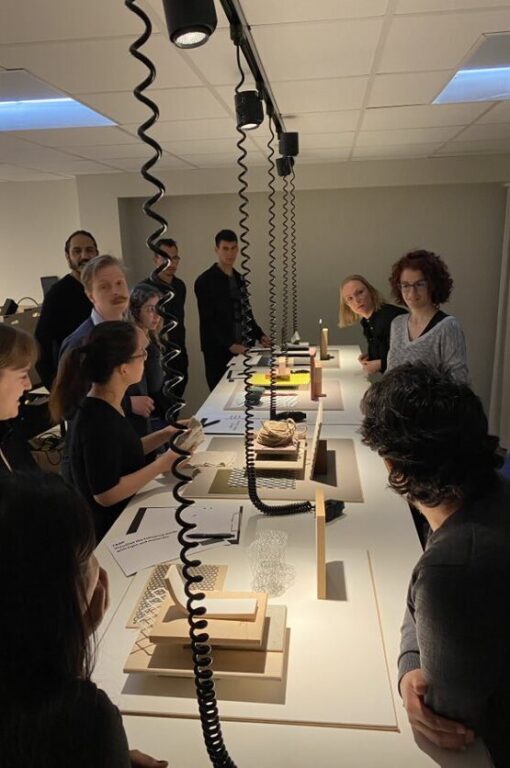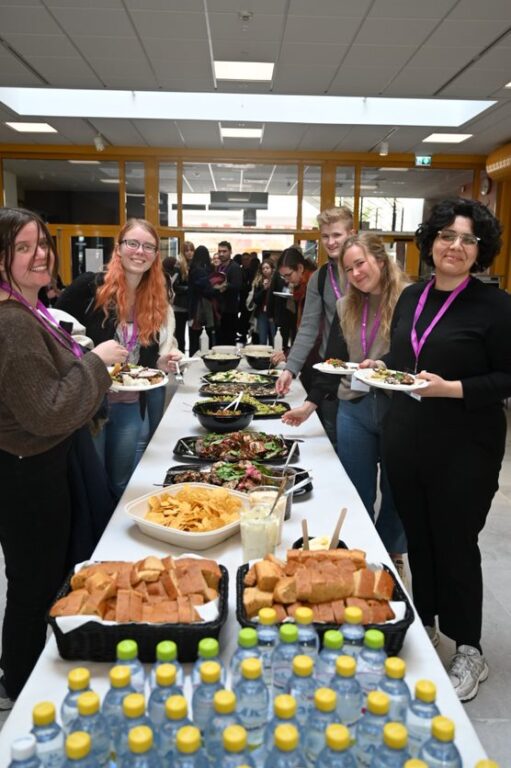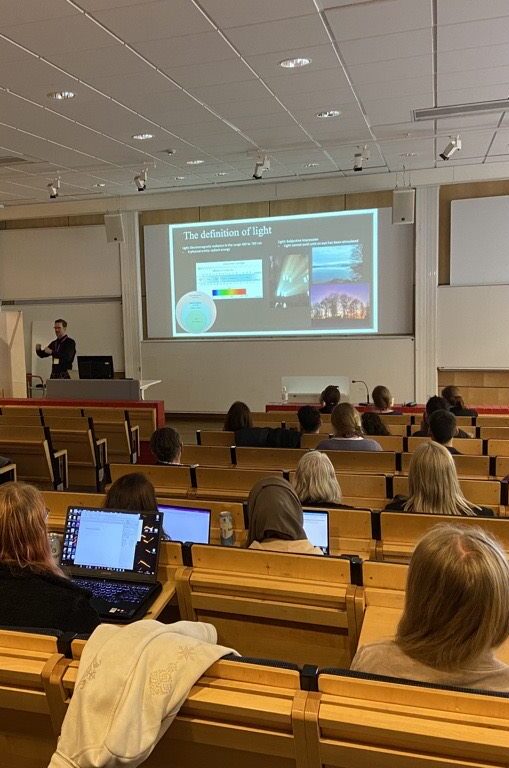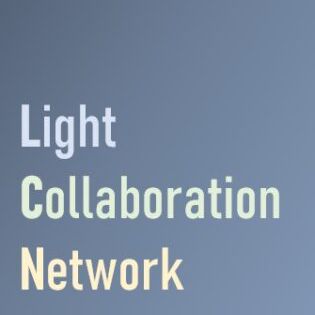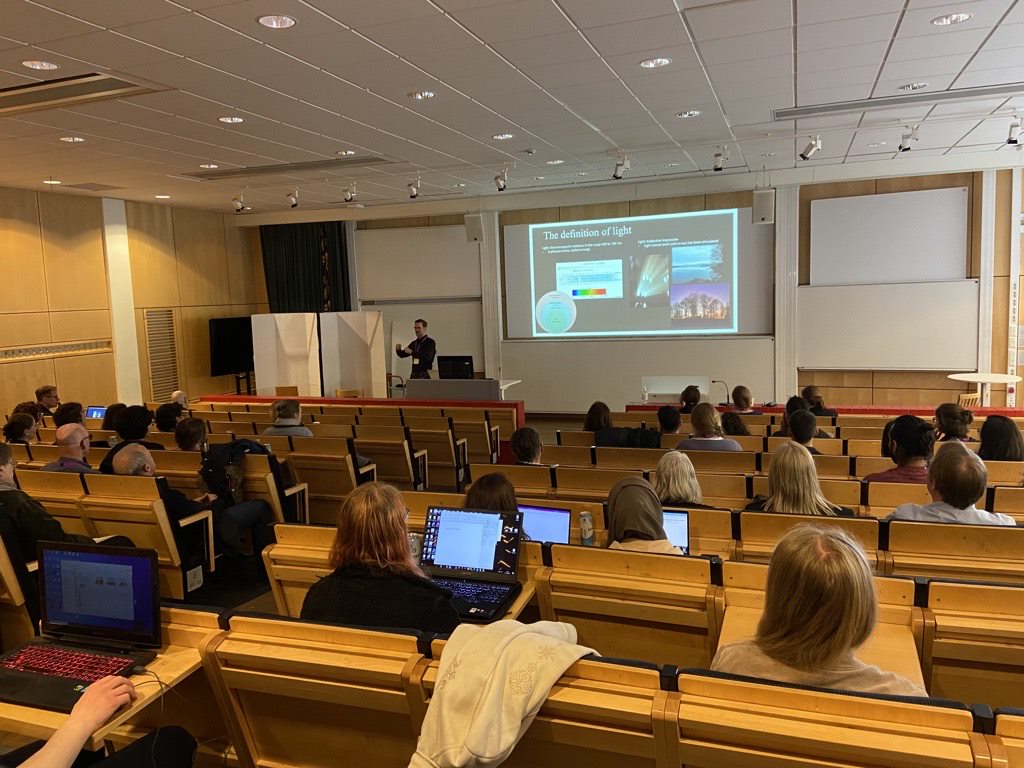First In-Person Event
Students, researchers and companies participated in the first Light Collaboration Network (LCN) in person event on 12 May: Light Awareness – Measurement and Application at the School of Engineering (JTH) at Jönköping University (JU).
Organised by the LCN and the Department of Construction Engineering and Lighting Science at JTH, the purpose of the conference was to inform about new research on how light affects people’s well-being and to bring together lighting design students from different universities in line with the main objective of the LCN, which is to encourage collaboration and to bring together lighting professionals from different disciplines.
About 35 lighting design bachelor’s students from JTH and master’s students from the Royal Institute of Technology in Stockholm (KTH) attended the conference together with researchers and teachers from JTH, KTH, Lund University and Umeå University.
Representatives from Fagerhult’s lighting and Hide-a-lite also participated. Among other things they took part in lectures and experiments on themes such as light flicker, glare, different colour temperatures and measurement of light.
“It is exciting to learn more about new research on lighting. Light is everywhere and affects so much more than you think, so it is super important.”
Henrik Lindberg, Lighting Design Programme at JTH.
Flicker, Glare, Colour Temperatures and Light Measurement
Presentations were given by LCN Committee Members:
Visual ergonomics, flicker and glare – Johannes Lindén
Biology, lighting design and architecture – demonstrating spectrum and light exposure – Katharina Wulff, Myriam Aries and Ute Besenecker
“It is valuable for us to meet all knowledgeable researchers and fun to exchange thoughts and ideas with the lighting design students at JTH.”
Elsa Frisén, KTH student
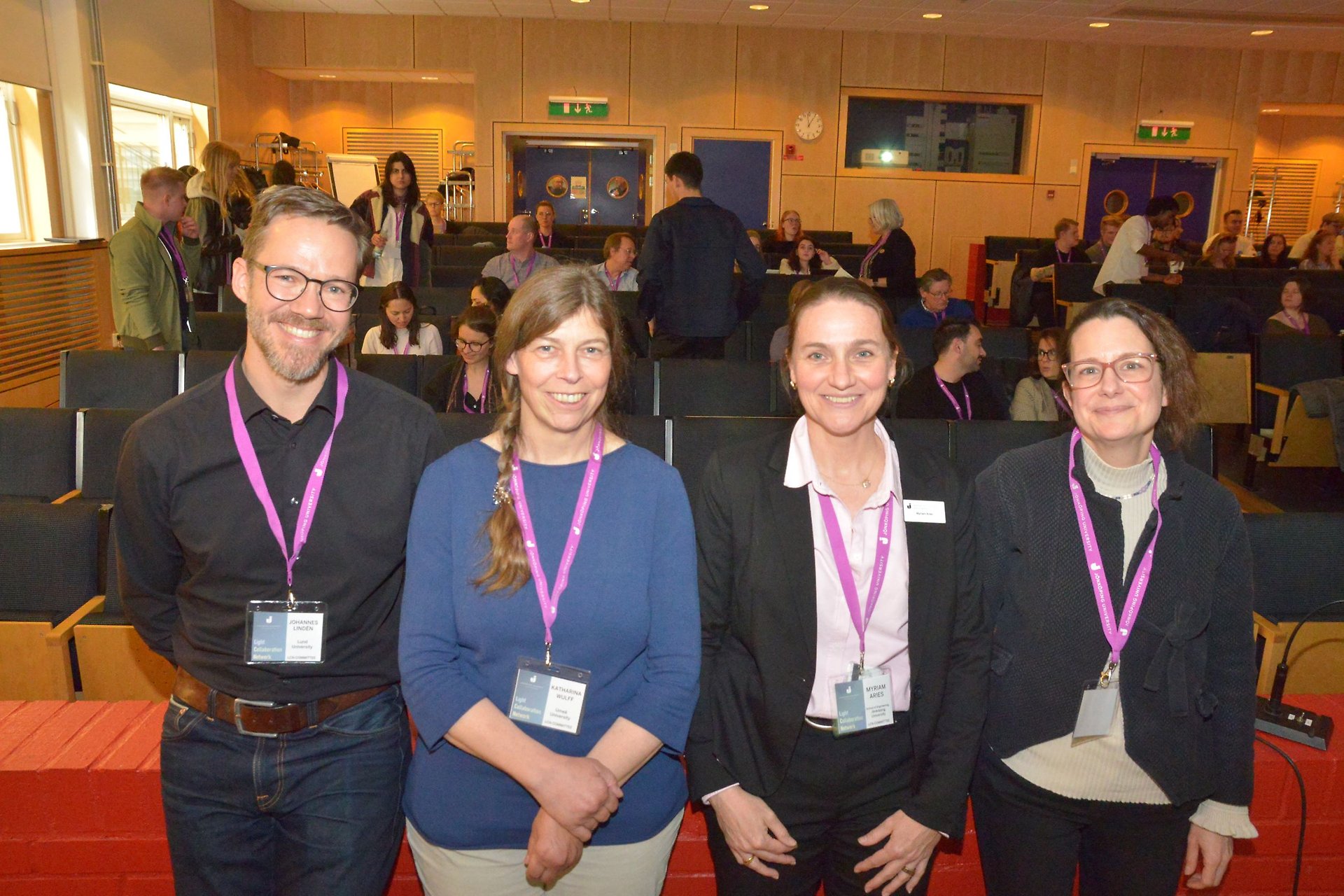
Johannes Lindén, Lund University, Katharina Wulff, Umeå University, Myriam Aries, Jönköping University, and Ute Besenecker, KTH.
“You get the feeling of being at the dentist”
In one of the demonstrations during the day, the lighting design labs were set up with different types of lighting within the ubiquitous so-called 60 x 60 luminaires.
Johan Röklander is a lighting designer at TRS Consulting AB and a part-time teacher at JU. According to Johan:
“There are good examples of 60×60 luminaires, but often the lowest price for lighting is sought for public environments and so then the quality of lighting matches this.
“Strong luminous surfaces against dark surfaces are difficult for the eye and can lead to tension headaches, fatigue and reduced work capacity. You get the feeling of being at the dentist and you do not want that. Instead, you should have softer light that can also be directed upwards.”
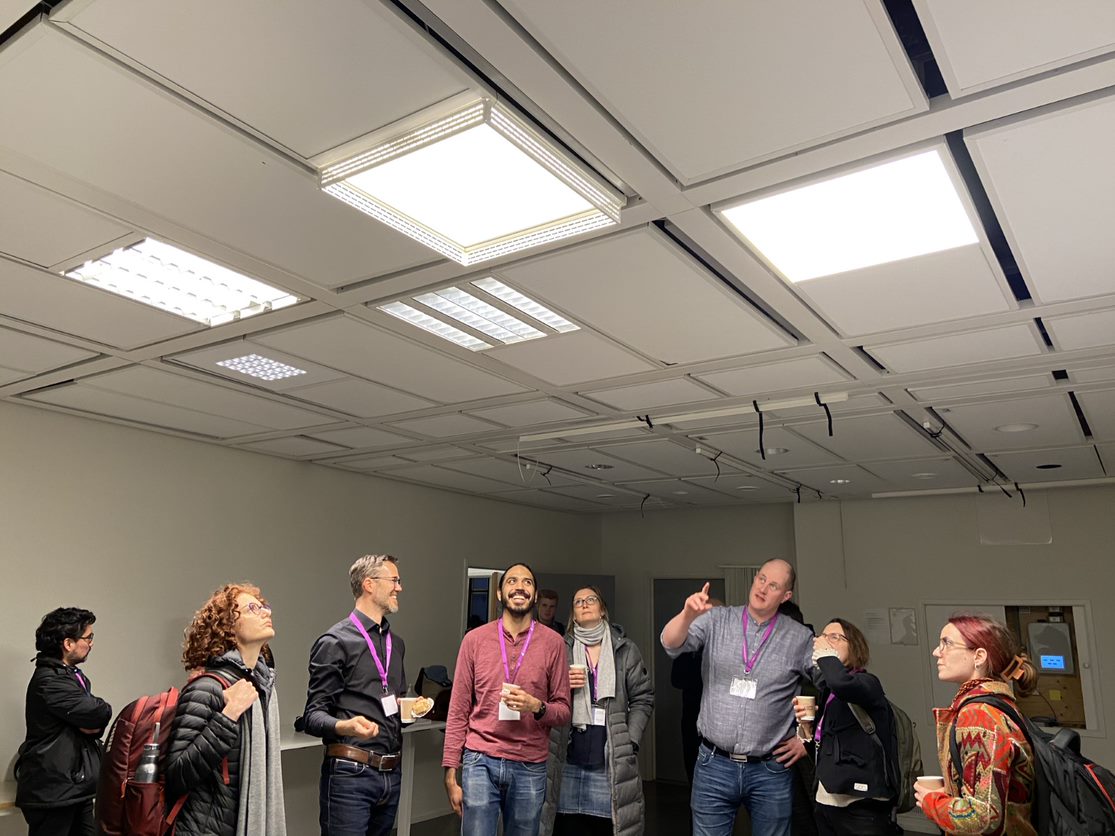
Good lighting is not always noticeable
“When you walk into a room and feel how nice it is there but do not know why, then it can be due to good lighting. It is a huge challenge to achieve that in everyday life, that the lighting has an effect, but that it does not stand out” says Johannes Lindén, LCN co-ordinator.
“It is important to meet and network in this way.
It leads to interactions, synergy effects and collaborations as well as inspiration for students to learn more, because light is a complex and multidisciplinary subject.”
Johannes Lindén, LCN Co-ordinator
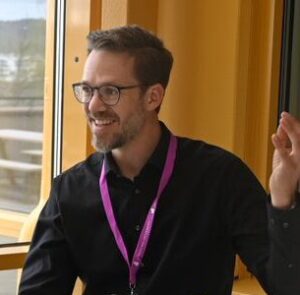
Thank Yous
The day was made possible with the support of Energimyndigheten (Swedish Energy Agency) and Jönköping University – School of Engineering.
Thanks also to Daniel Sjödahl, Communicator at JU for his reporting, from which this text is adapted. Daniel’s report is available here in Swedish and English.


